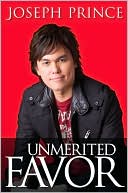Quality Research Papers
Nancy Vyhmeister's Quality Research Papers is fast becoming a standard reference textbook for writing research papers in the field of religion and theology. It takes the student from the beginning assignment of a paper through the research phase to the finished paper. This second edition gives improvements and added material for such things as the expanding field of online research and doing church-related research in a professional manner. Resources for doing research are updated throughout...
Search in google:
Nancy Vyhmeister's Quality Research Papers is fast becoming a standard reference textbook for writing research papers in the field of religion and theology. It takes the student from the beginning assignment of a paper through the research phase to the finished paper. This second edition gives improvements and added material for such things as the expanding field of online research and doing church-related research in a professional manner. Resources for doing research are updated throughout the book.
Quality Research Papers For Students of Religion and Theology \ \ By Nancy Jean Vyhmeister Zondervan Copyright © 2008 Nancy Jean Vyhmeister\ All right reserved.\ ISBN: 978-0-310-27440-7 \ \ \ \ Chapter One WHAT IS RESEARCH? \ What makes research different from other types of studying and writing? What are the specific objectives of research? What are the essential steps in doing research? What pitfalls are to be avoided? How can one tell research from other forms of communication? What are the values and benefits of student research? These are questions this chapter endeavors to answer.\ Definition of Research\ Research can be defined as a method of study that, through careful investigation of all evidence bearing on a definable problem, arrives at a solution. To research a topic is to collect, organize, evaluate, and present data. This process cannot take place without analysis and synthesis, for research is more than a compilation of information. The results of research must be presented in a clear and concise way so that anyone can follow the process, without having to repeat any of the steps, in order to see how you, the researcher, have arrived at your conclusions.\ A four-part definition of research is given by Isaac Felipe Azofeifa: "Research is a (1) systematic search for (2) adequate information to reach (3) objective knowledge of a (4) specific topic." Each element deserves individual analysis.\ Quality Research Papers has four purposes:\ 1. to stimulate and develop students' capacity for doing careful and fruitful research\ 2. to help students improve their ability to clearly express the results of their research\ 3. to assist theology students to meet the requirements of their educational programs\ 4. to allay students' fear of doing research by improving their skills and tools.\ Because most people learn better when they are shown than when they are told, models are provided to show how your paper should look. In addition, many aspects of the book itself are models. The different levels of headings, the footnotes, the tables and figures, as well as the bibliographical entries show you how to do the different parts of your paper. Only four items, which enhance the graphic design of this book, do not represent what you will be doing: the lack of indentation of the first line of the first paragraph following a heading, the page-wide separator line between the text and the footnotes, full justification in the text, and the many enumerations. In your "quality research paper" you will indent all paragraphs, use a two-inch separator line (default), left justify all text, and follow the instructions for enumerations given on pages 110-111.\ The first thirteen chapters present the steps and procedures of research. Chapters 14 through 18 describe specialized forms of research: exegesis, description, program development, the case study, and book reviews. Chapter 19 discusses statistics, graphs, and tables as used in research. Chapter 20 deals with theses and dissertations, while chapter 21 presents instructions for writing a Doctor of Ministry project. Together, these chapters give the basic guidelines for students in theological education who desire to achieve success in research.\ May your research be fruitful, stimulating, and even enjoyable!\ Nancy Jean Vyhmeister\ 1. Systematic search. This requires effort. It does not just happen. A researcher must develop and use a clear method and a logical system. Research is not easy; it requires time, energy, thought, and effort.\ 2. Adequate information. Research does not look for someone's ideas about matters touching on the problem; it seeks precise answers to the questions being asked. The information presented must be from authoritative sources, speak to the problem, and be duly documented.\ 3. Objective knowledge. In order to reach objective knowledge, you must have prior knowledge of the topic. To this prior knowledge you will add facts, not suppositions or possibilities. Research is done with the head and not the heart. Research looks at facts, not conjectures, nor even possibilities, much less long-cherished pet ideas.\ 4. Specific topic. It is impossible to do adequate research on a large topic. The research paper is not an encyclopedia. A specific, clearly delineated problem is the only one that can be solved.\ Research may be writing a ten-page paper on Nazareth in the time of Christ. Research is what the writer of an M.A. thesis does for weeks on end. Persistent research efforts-over long months-go into producing a dissertation. As used in this book, the term research applies to all scholarly studies at undergraduate, graduate, or postgraduate level. Some teachers may call it a research essay; others may label it a term paper. Most of what students write for classes involves research.\ Research is the search for truth-for God is truth-whether it be historical, scientific, or theological. It is all God's truth, as Frank E. Gaebelein points out. This makes research an appropriate activity for believers. Yet, because God is ultimate truth and human beings are limited and finite, our arrival at truth must not be considered final. We may never be able to see the whole picture. Furthermore, what is "truth" today may be changed tomorrow by a new discovery. For this reason, even a careful researcher must be humble.\ Even in the area of theology we should be open to truths not seen before. In 1892, Ellen White wrote about the attitudes that should exist in those who study the Scriptures. "We have many lessons to learn, and many, many to unlearn. God and heaven alone are infallible. Those who think that they will never have to give up a cherished view ... will be disappointed." Discussing the search for theological truth, White had already written: "Truth is eternal, and conflict with error will only make manifest its strength.... We must study the truth for ourselves. No living man should be relied upon to think for us. No matter who it is, or in what position he may be placed, we are not to look upon any man as a perfect criterion for us." Thus, we research, in search of all truth, humbly using our God-given minds to accomplish the search.\ The Research Process\ Although the research process will be studied carefully in the following chapters, at this point a brief synthesis of this endeavor is useful. In addition, we will consider some of the hindrances to the successful completion of research.\ In its simplest form, the research process involves identification, collection, evaluation, and presentation. Once you have selected a topic, you must identify the problem or issue to be tackled. The issue must be specific, often expressed as a research question, not something vague and general. After you know exactly what the problem to be solved is, you can begin collecting data. Gather information carefully from many sources. Organize your data in a way that is clear and logical to you and others. After you have gathered all the information, you will need to analyze and evaluate it: Not all sources are equally valuable; not all opinions are of the same weight. Finally, after you have gathered the evidence, you must draw conclusions regarding the solution of the problem. You will then write a research report that gives a clear view of the problem, of the information gathered, and of the solution reached.\ Some of the most dangerous pitfalls for researchers are those that relate to a previous mindset. When a cherished idea is being defended, for example, it is extremely difficult to be objective, to take into account adverse evidence, to break out of a limited thinking pattern. The prejudices (meaning here "prejudged results") taken into a research project set the tone and often determine the answer to a question. People usually see what they want to see. It is impossible to do research without presuppositions. One must, then, recognize what these presuppositions are, state them in the introduction to the research, and proceed from there. For example, if you accept the Genesis 1:26 statement that human beings were made in the image of God, whatever conclusions you reach on the treatment of psychological problems in children will reflect that basic understanding.\ (Continues...)\ \ \ \ \ Excerpted from Quality Research Papers by Nancy Jean Vyhmeister Copyright © 2008 by Nancy Jean Vyhmeister. Excerpted by permission.\ All rights reserved. No part of this excerpt may be reproduced or reprinted without permission in writing from the publisher.\ Excerpts are provided by Dial-A-Book Inc. solely for the personal use of visitors to this web site. \ \
Contents List of Illustrations....................ixIntroduction....................xi1. What Is Research?....................1Definition of Research....................1The Research Process....................3Kinds of Research....................4What Research Is Not....................5The Value of Research....................62. Using the Library....................9The Library Catalog....................10Other Library Resources....................143. Taming the Internet....................21Online Resources....................21Searching the Internet....................23Evaluating Internet Resources....................25Footnotes and Bibliographies for Internet Materials....................264. Choosing a Topic....................29Reading....................30Asking Questions....................31Narrowing the Topic....................33Selecting a Thesis or Dissertation Topic....................345. Planning Research....................35Basic Steps....................36The Proposal....................39Tentative Outline....................416. Preparing Bibliographies....................45Bibliographic Records....................45Format of Bibliographic Entries....................49Final Bibliography....................537. Research Thinking....................57Research Mindset....................57Thinking Processes....................62Asking Questions....................648. Research Reading....................67Reading....................67Evaluating Sources....................69Taking GoodNotes....................72Sample Note Cards....................779. Footnotes: Why, When, and How....................79Why Footnotes?....................79When to Footnote....................80How to Footnote....................81Bible References....................8510. Reference Notes and Bibliographical Entries Compared....................89Published Materials....................90Unpublished Materials....................98Electronic Media....................10111. Organizing the Paper....................103Parts of the Paper....................103Organizing the Body of the Paper....................107Practical Helps for Organizing the Paper....................10812. Writing the Paper....................113Research English....................113The Paragraph: Smallest Unit of the Paper....................115Transitions and Introductions....................118The Writing Process....................120Help for the Novice Writer....................12313. Formatting the Paper....................125Page Format....................126Footnotes and Quotations....................128Tables, Figures, and Illustrations....................129Spelling, Punctuation, and Other Details....................130Sample Pages....................13214. Biblical Exegesis as Research....................141Steps in the Exegetical Process....................141Presentation of Exegesis....................14815. Descriptive Research....................151Steps in Descriptive Research....................153Sampling....................156Surveys....................157Interviews....................16116. Program Development as Research....................163Steps in Program Development....................164Organizing and Writing the Report....................16817. The Case Study as Research....................171The Case Study in the Social Sciences....................171The Case Study in Pastoral Research....................172Writing the Case Study....................17818. Miscellaneous Theological Writing....................181Papers on Theological Issues in Ministry....................181The Book Review....................18319. Statistics, Tables, and Graphs....................189Some Basics of Statistics....................190Statistical Tables and Graphs....................199Statistics and Honesty....................20620. Theses and Dissertations....................209Review of Literature....................209Theses....................212Dissertations....................217Model Approval Page....................22021. Doctor of Ministry Projects....................221Proposal....................223The Written Paper....................223Procedure....................224Specific Kinds of D.Min. Papers....................225Conclusion....................231Appendixes A: APA Citation Style....................233B: Transliteration of Biblical Languages....................245C: List of Common Abbreviations....................247D: Tips for the Typist....................251Selected Bibliography....................255Index....................257








